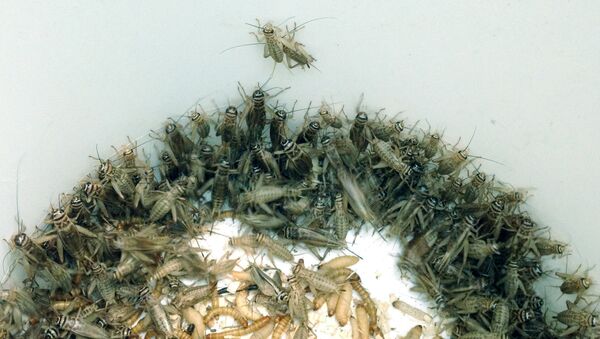The Fazer group's bakery division head, Markus Hellstrom, made the eye-opening statement on Thursday.
"Finns are known to be willing to try new things," Hallstrom remarked, adding that surveys were commissioned by the Finnish food giant that garnered results indicating that the bug bread — to be successful — must have "good taste" and "freshness," cited by the Associated Press.
Fazer detailed that one beetle baguette would contain as many as 70 dried — and presumably dead — house crickets, the kind we are forever escorting from the basement.
Prior to being introduced to the loaf, the dead bugs are ground to a powder. The insects are said to be raised on a farm — whether or not they are allowed free-range access is not clarified — and that the overall amount of the Gryllidae insect clan ends up being some 3 percent of the total weight of each loaf.
"Finns have the most positive attitudes toward insects," said Fazer Bakery Finland innovation department head Juhani Sibakov.
"We made crunchy dough to enhance taste," he declared, cited by ap.com.
The result is "delicious and nutritious," according to the corporate bakery chief, who added that the Fazer Sirkkaleipa (Fazer Cricket Bread in the local dialect) "is a good source of protein and insects also contain good fatty acids, calcium, iron and vitamin B12."
"Mankind needs new and sustainable sources of nutrition," Sibakov claimed, noting that Finnish law as of November 1 now allows for the sale of insects as food.
The bug bread went on sale on Friday in Finnish urban areas only, as there is surprisingly not enough insect powder yet for nationwide sales.
Elsewhere in Europe, the Swiss supermarket chain Coop began the sale of insect-laden burgers and balls in September. Legal bug stuff is also contained within many edible products available in Belgium, Britain, Denmark and the Netherlands.
The UN Food and Agricultural Organization has been pushing bugs as food for humans recently, claiming health benefits, including a high protein and mineral content, while observing that their husbandry — if we can call it that — produces much less greenhouse gases than ordinary mammalian livestock, and costs significantly less money and real estate to bring to market.



